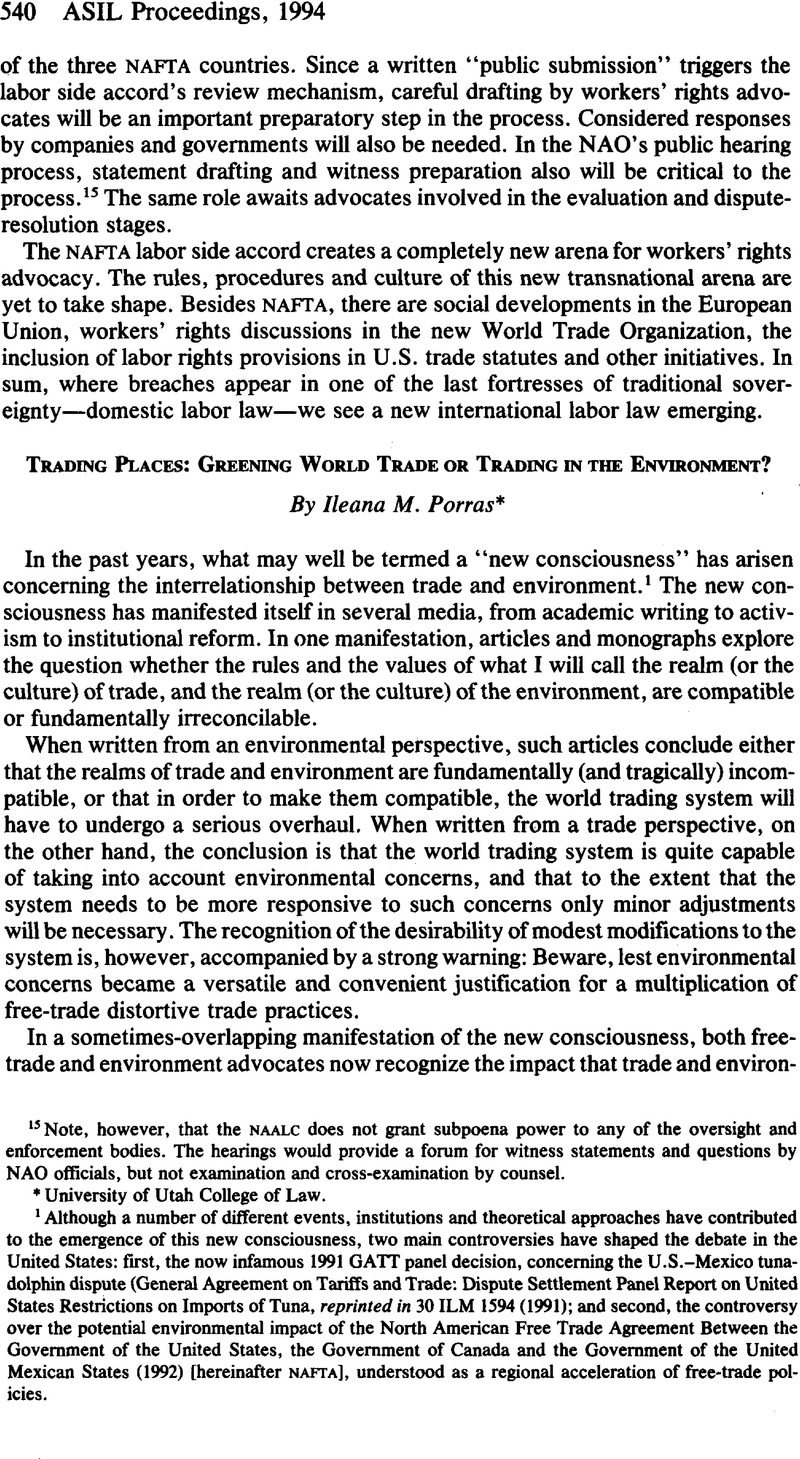No CrossRef data available.
Published online by Cambridge University Press: 28 February 2017

1 Although a number of different events, institutions and theoretical approaches have contributed to the emergence of this new consciousness, two main controversies have shaped the debate in the United States: first, the now infamous 1991 GATT panel decision, concerning the U.S.-Mexico tunadolphin dispute (General Agreement on Tariffs and Trade: Dispute Settlement Panel Report on United States Restrictions on Imports of Tuna, reprinted in 30ILM 1594 (1991); and second, the controversy over the potential environmental impact of the North American Free Trade Agreement Between the Government of the United States, the Government of Canada and the Government of the United Mexican States (1992) [hereinafter NAFTA], understood as a regional acceleration of free-trade policies.
2 The so-called "polluter pays principle" was orginally elaborated in the OECD in the early 1970s: Recommendation on Guiding Principles Concerning International Economic Aspects of Environmental Policies, C(72)128, OECD, 1972, and Recommendation on the Implementation of the Polluter Pays Principle, C(74)223, OECD 1974, and was subsequently incorporated as Principle 16 of the Rio Declaration on Environment and Development, adopted June 14, 1992, 31 ILM 874 [hereinafter Rio Declaration].
3 See, e.g., SNA Handbook on Integrated Environmental and Economic Accounting, Statistical Office of the United Nations, New York (1992).
4 UN Convention on Biological Diversity, June 5, 1992, 31 ILM 822 (1992).
5 See e.g., Stewart, Richard B. Wiener, Jonathan B., “The Comprehensive Approach to Global Climate Policy: Issues of Design and Practicability,” 9 Ariz. J. Int’l & Comp. L. 83 (1992)Google Scholar.
6 Marine Mammal Protection Act of 1972, 16 U.S.C. �� 1361-1407 (1988).
7 Convention on the International Trade in Endangered Species of Wild Fauna and Flora, 3 March 1973, 12 ILM 1085 (1973).
8 Montreal Protocol on Substances that Deplete the Ozone Layer, September 16, 1987, 26 ILM 1550 (1987) (entered into force Jan. 1, 1989).
9 Rio Declaration, supra note 3, Principle 7.
10 Rio Declaration, supra note 3.
11 Rio Declaration, supra note 3, Principles 3, 4.